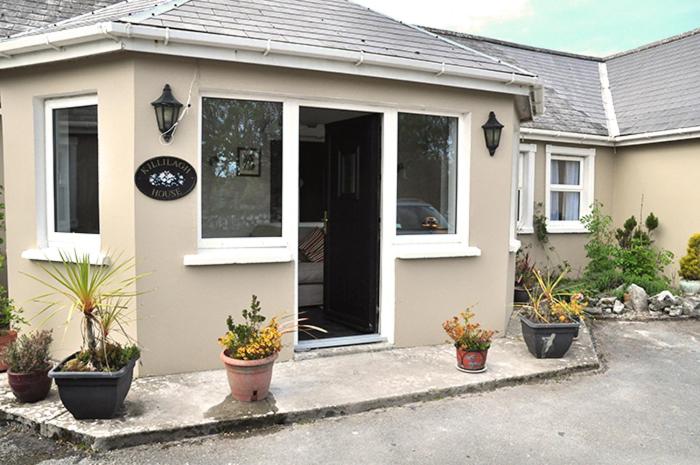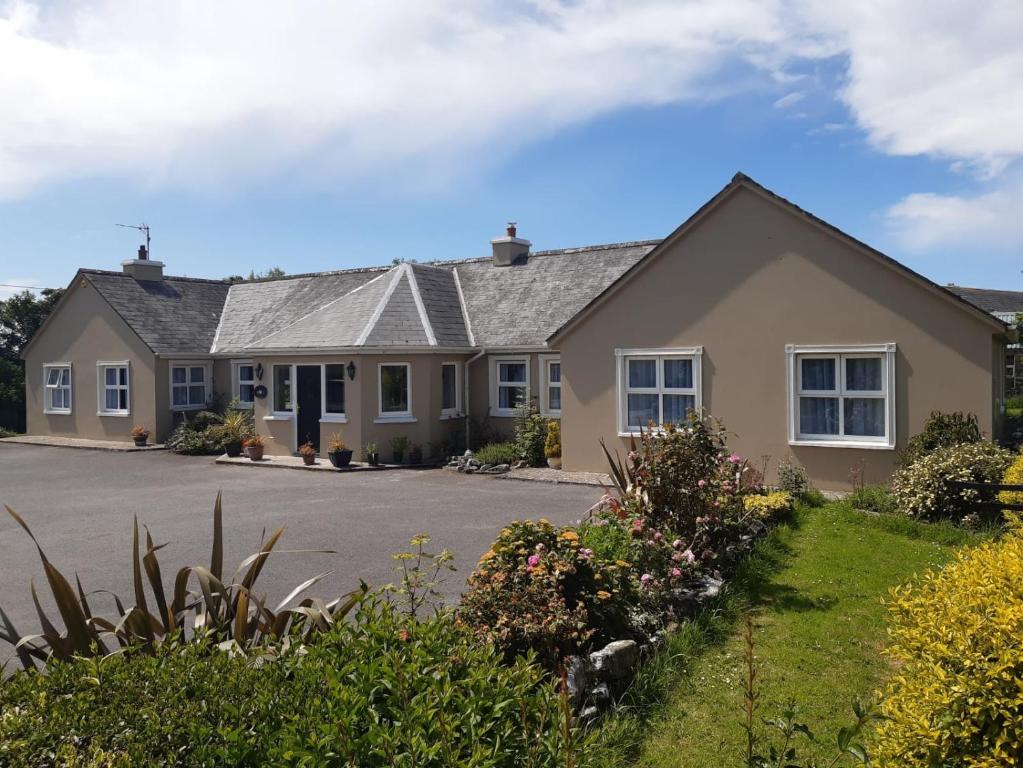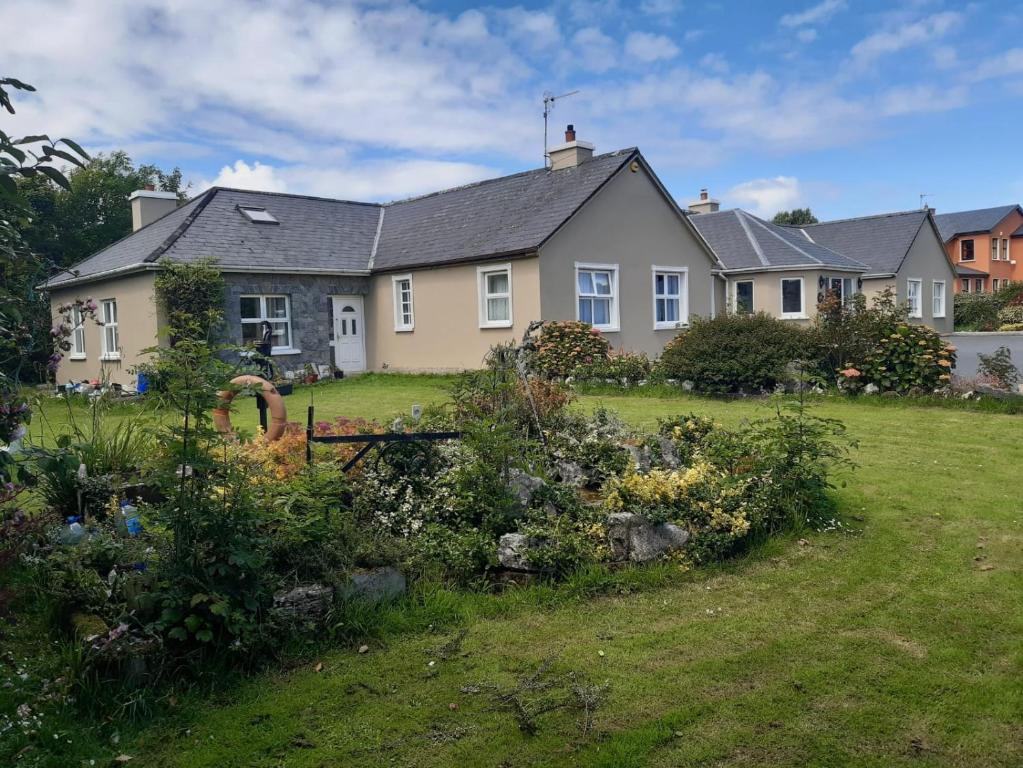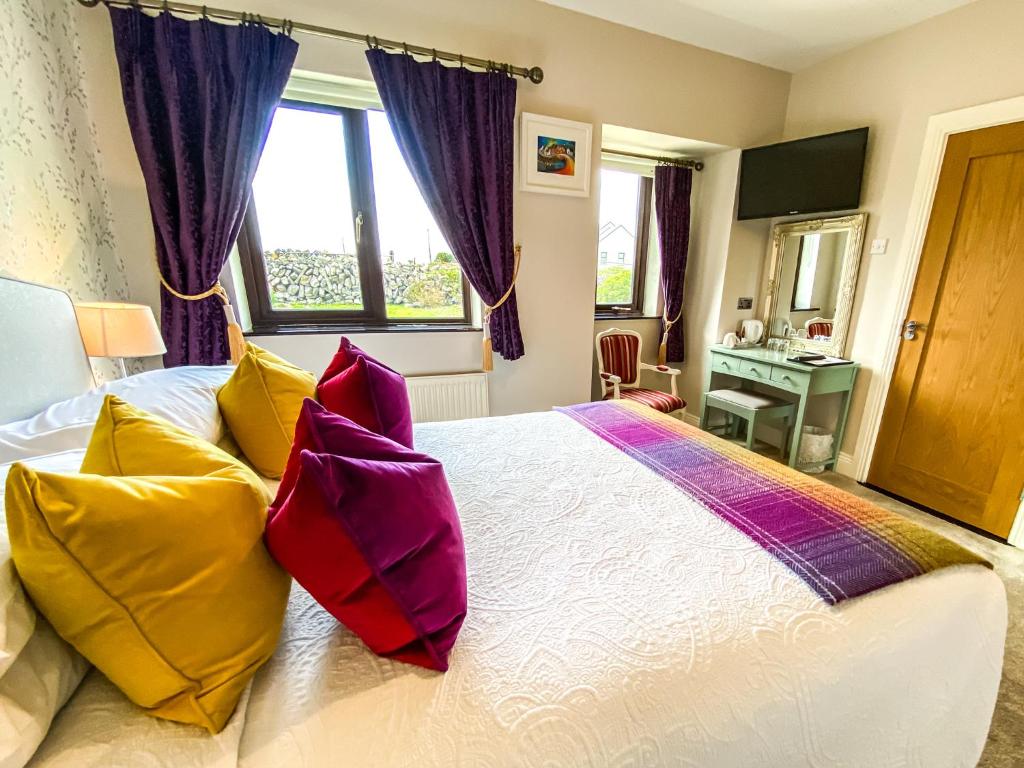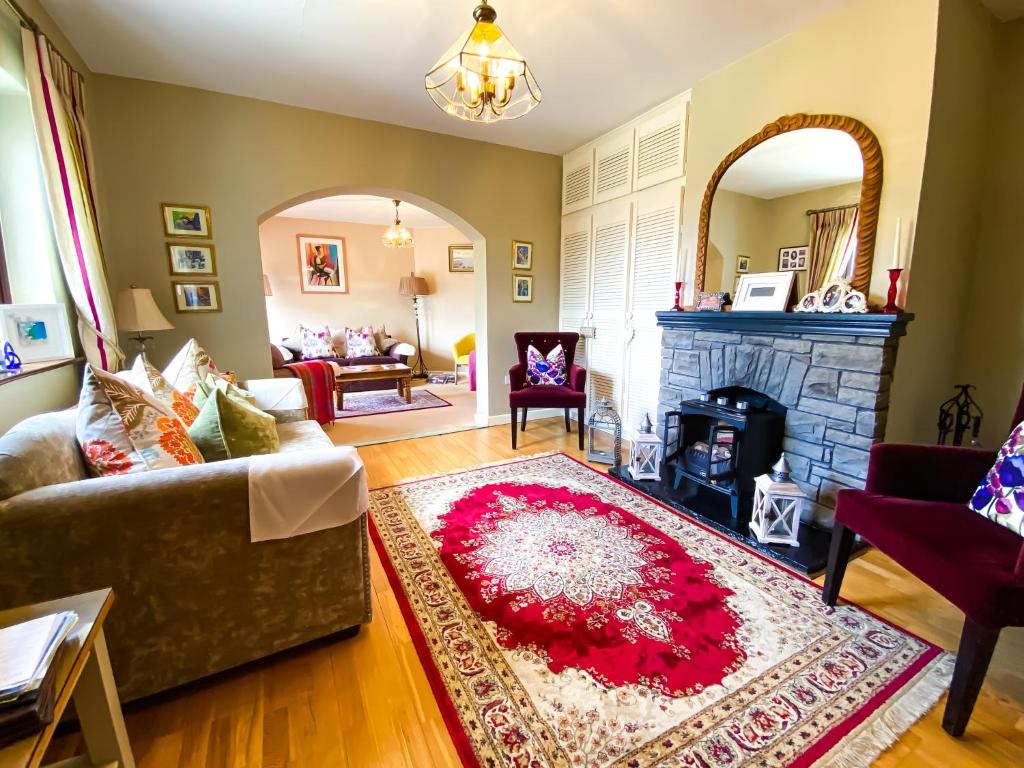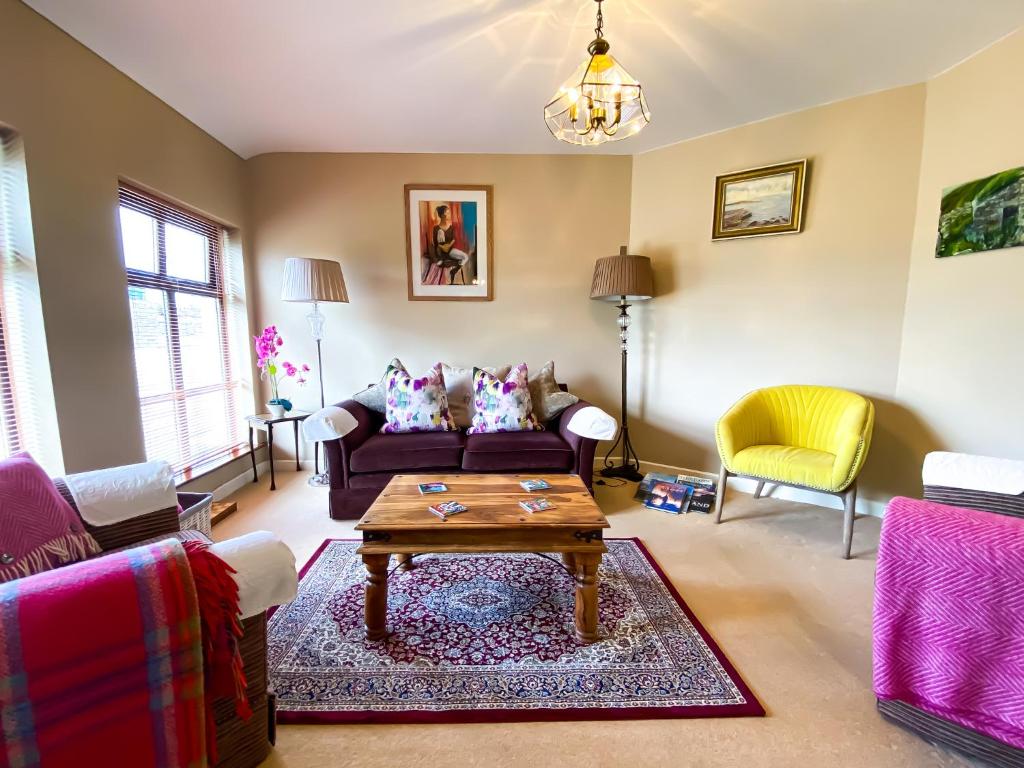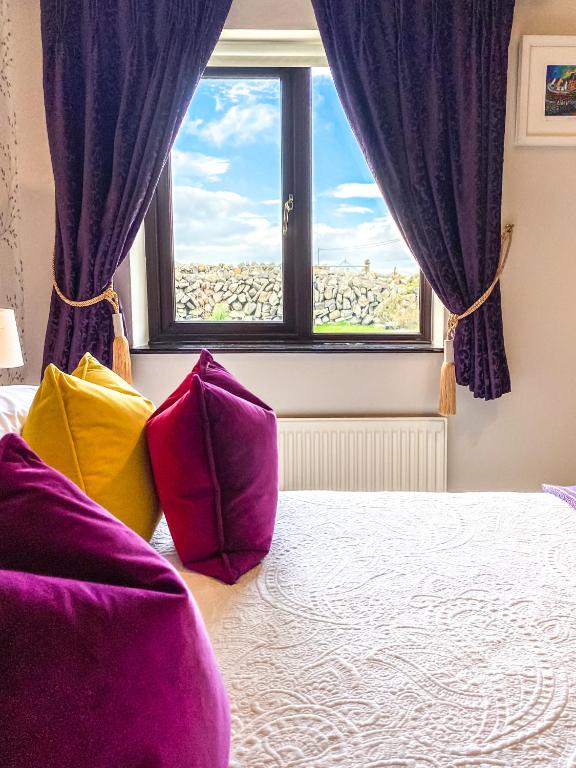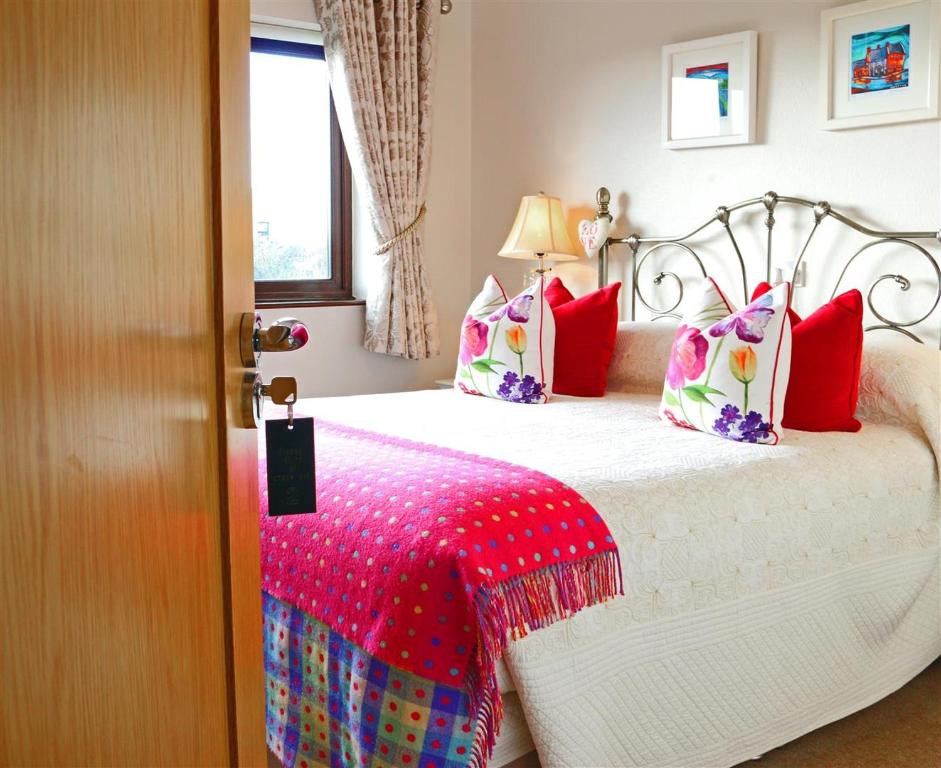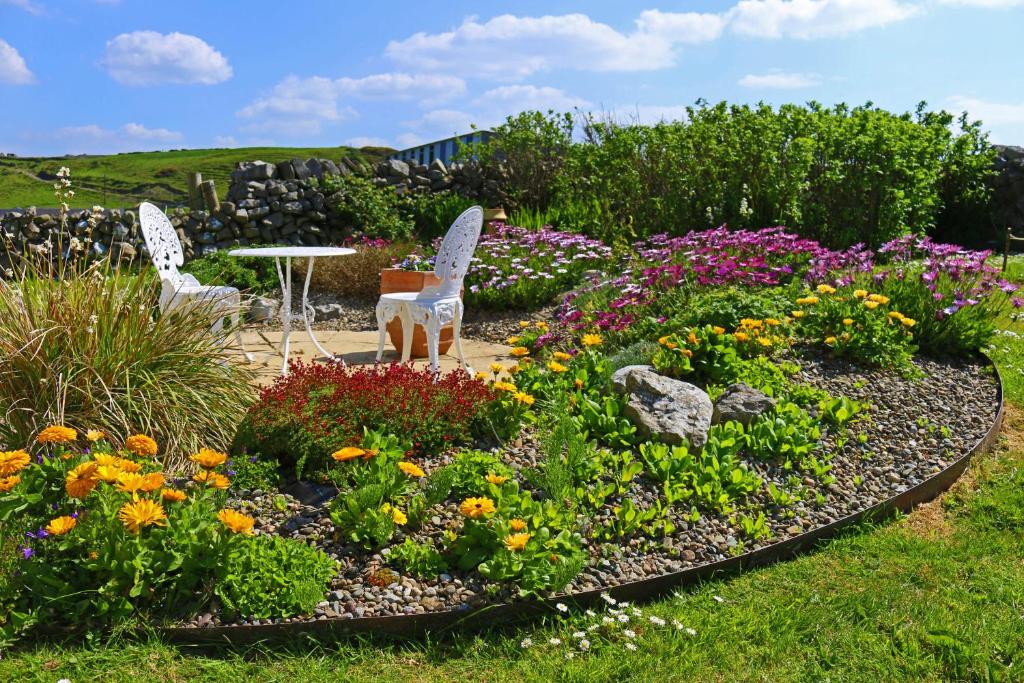Mentioned by The Whole World Or Nothing
33 Stellar Things To Do In Galway Ireland


"Standing guard over Inishmore, Dun Aengus, 8km west of Kilronan, has three massive drystone walls that run right up to sheer drops to the ocean below. Believed to be up to 2000 years old, the fort is protected by remarkable chevaux de frise, fearsome and densely packed defensive limestone spikes. Displays at its small visitor centre provide context and a 900m walkway wanders uphill to the fort itself."
"Dún Aonghasa on Inis MorInis Mor The easiest way to get to Inis Mor is by taking a ferry from Ros a' Mhíl/Rossaveal, which is located about 50 minutes from Galway. You can either drive yourself to Rossaveal, or take advantage of the shuttle bus that leaves from central Galway about 1.5 hours before sailing in the morning."
"Almost hanging over a 100-metre cliff edge on Inishmore, one of the Aran Islands, Dún Aonghasa is thought to be at least 2000 years old. It consists of four concentric circles, their walls sometimes as much as 4 metres thick. Yet for all its obvious defensive might, the fort is thought to have been largely ceremonial."

"One of Ireland's most famous prehistoric grave sites, Gleninsheen lies beside the R480 7km south of Ballyvaughan. It's thought to date from 4000 to 5000 years ago. A magnificent gold gorget (a crescent of beaten gold that hung round the neck) found here and dating from the late Bronze Age is now on display at the National Museum in Dublin. Note: the access gate to the tomb is sometimes locked, and signage is poor."

"While only two of the ancient buildings at this site are actually churches this was one of the earliest Irish pilgrimage sites ever."

"Newtown Castle – Newtown Castle is a stunning and unique 16th-century tower house that is located in the scenic County Clare village of Ballyvaughan; it is most striking and notable for its cylindrical shape and square, pyramid-shaped base. The history of the castle dates back to the 16th century, in around the year 1550, as a residence for the O’Brien clan; however, the castle was then later passed over to the O’Lochlainn family. In recent times, the castle has been restored to its former glory, as it fell into disrepair during the 18th century, and it is today open to the public on weekdays only."

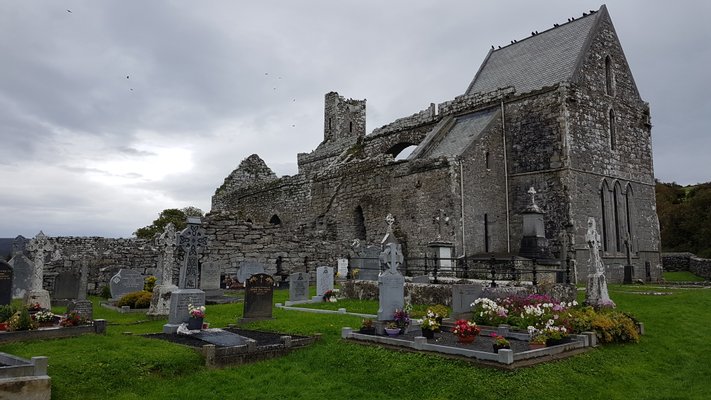
"Moody and evocative, this marvellous ruined former Cistercian abbey is 1.5km inland from Bellharbour, in a quiet green hollow, surrounded by the stark grey Burren hillsides. It began its long decline in the 15th century but the surviving vaulting in the presbytery and transepts is impressively intact and some striking Romanesque carvings remain."

"The original Knappogue Castle was constructed in the year 1467 by Sean Mac Conmara, who was the son of Sioda Mac Conmara; it is a large medieval tower house, that originally served the purpose of a watchtower during the midst of much military conflict. During the 19th century, like many castles in Europe and Ireland, Knappogue Castle was restored into the style of the Gothic and Medieval era, after being acquired by Theobald Fitzwalter Butler, 14th Baron Dunboyne, in the year 1855; they spent a large amount of time renovating and restoring the castle, whilst also adding several additions to it, such as the drawing-room, the long room, and a west wing. Where: County Clare, IrelandWhen: 1467Style: MedievalOpen for visit: Yes, for more information check here."

"North of the Square, Ennis Friary was founded by Donnchadh Cairbreach O'Brien, a king of Thomond, between 1240 and 1249. A mix of structures dating between the 13th and 19th centuries, the friary has a graceful five-section window dating from the late 13th century, a McMahon tomb (1460) with alabaster panels depicting scenes from the Passion, and a particularly fine Ecce Homo panel portraying a stripped and bound Christ."
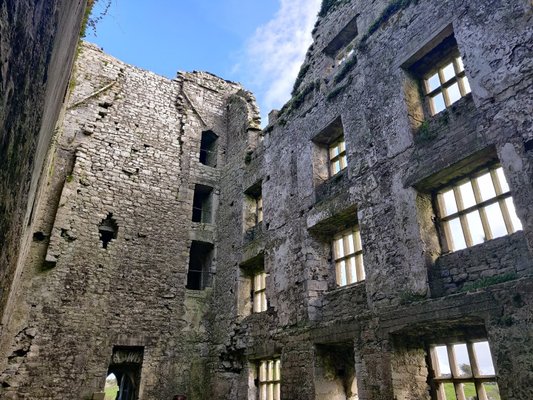
"Leanmaneh Castle is a fantastic castle that is situated in the town of Leanmaneh North, in County Clare. The origins of the castle date back to the late 15th century, and it is believed to have been constructed by the O’Brien family; the castle was later renovated into a manor house, and it merged its function as a military centre with its residential qualities. The castle fell into ruin during the 18th century, and it has not been renovated since then; it exists on privately owned land, in a farming region of the area, and due to its poor-quality state, it is unfortunately not open to the public."


"These two reserves, through their combination of deciduous woods, limestone reefs, lakes and turloughs, constitute one of the most interesting Irish vegetation and faunal complexes still in existence. The Coole-Garryland reserve contains a variety of floral habitats including well-formed high forest on deep pockets of soil, dwarf woodland on limestone pavement and a turlough complex in the Callows and Coole Lake. A large portion of this reserve was formerly owned by Lady Gregory, co-founder with W.B."
"One hour south of Galway City is a great place to take the kids for a day out in nature. Covering an area of approximately 400 hectares is the wetland and woodland nature reserve of Coole Park. The two reserves constitute woods, limestone reefs, lakes, and turloughs where you can see interesting Irish vegetation and fauna."

"North of the Square, Ennis Friary was founded by Donnchadh Cairbreach O'Brien, a king of Thomond, between 1240 and 1249. A mix of structures dating between the 13th and 19th centuries, the friary has a graceful five-section window dating from the late 13th century, a McMahon tomb (1460) with alabaster panels depicting scenes from the Passion, and a particularly fine Ecce Homo panel portraying a stripped and bound Christ."


"This is a rare kind of garden – one to commemorate those who donated their organs. There is something mystic, something spiritual about it, but that is hard to describe. Birdsong fills the air."

"Moody and evocative, this marvellous ruined former Cistercian abbey is 1.5km inland from Bellharbour, in a quiet green hollow, surrounded by the stark grey Burren hillsides. It began its long decline in the 15th century but the surviving vaulting in the presbytery and transepts is impressively intact and some striking Romanesque carvings remain."

"The original Knappogue Castle was constructed in the year 1467 by Sean Mac Conmara, who was the son of Sioda Mac Conmara; it is a large medieval tower house, that originally served the purpose of a watchtower during the midst of much military conflict. During the 19th century, like many castles in Europe and Ireland, Knappogue Castle was restored into the style of the Gothic and Medieval era, after being acquired by Theobald Fitzwalter Butler, 14th Baron Dunboyne, in the year 1855; they spent a large amount of time renovating and restoring the castle, whilst also adding several additions to it, such as the drawing-room, the long room, and a west wing. Where: County Clare, IrelandWhen: 1467Style: MedievalOpen for visit: Yes, for more information check here."

"North of the Square, Ennis Friary was founded by Donnchadh Cairbreach O'Brien, a king of Thomond, between 1240 and 1249. A mix of structures dating between the 13th and 19th centuries, the friary has a graceful five-section window dating from the late 13th century, a McMahon tomb (1460) with alabaster panels depicting scenes from the Passion, and a particularly fine Ecce Homo panel portraying a stripped and bound Christ."

"While only two of the ancient buildings at this site are actually churches this was one of the earliest Irish pilgrimage sites ever."
